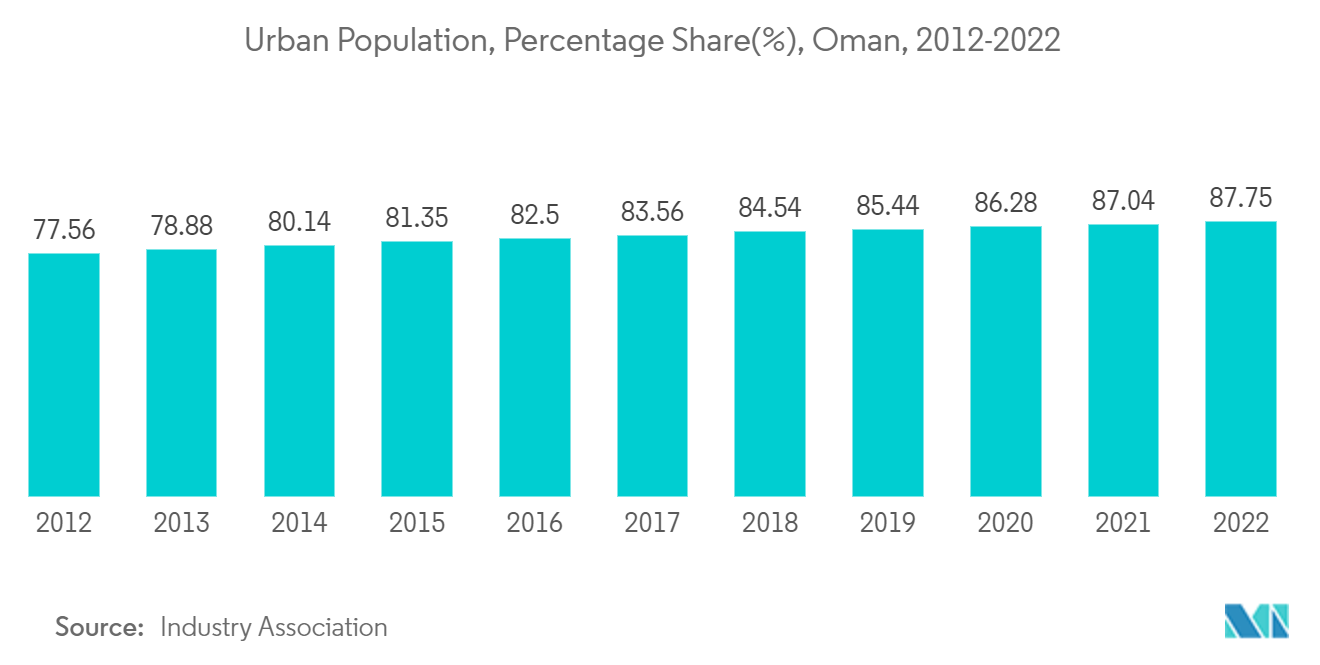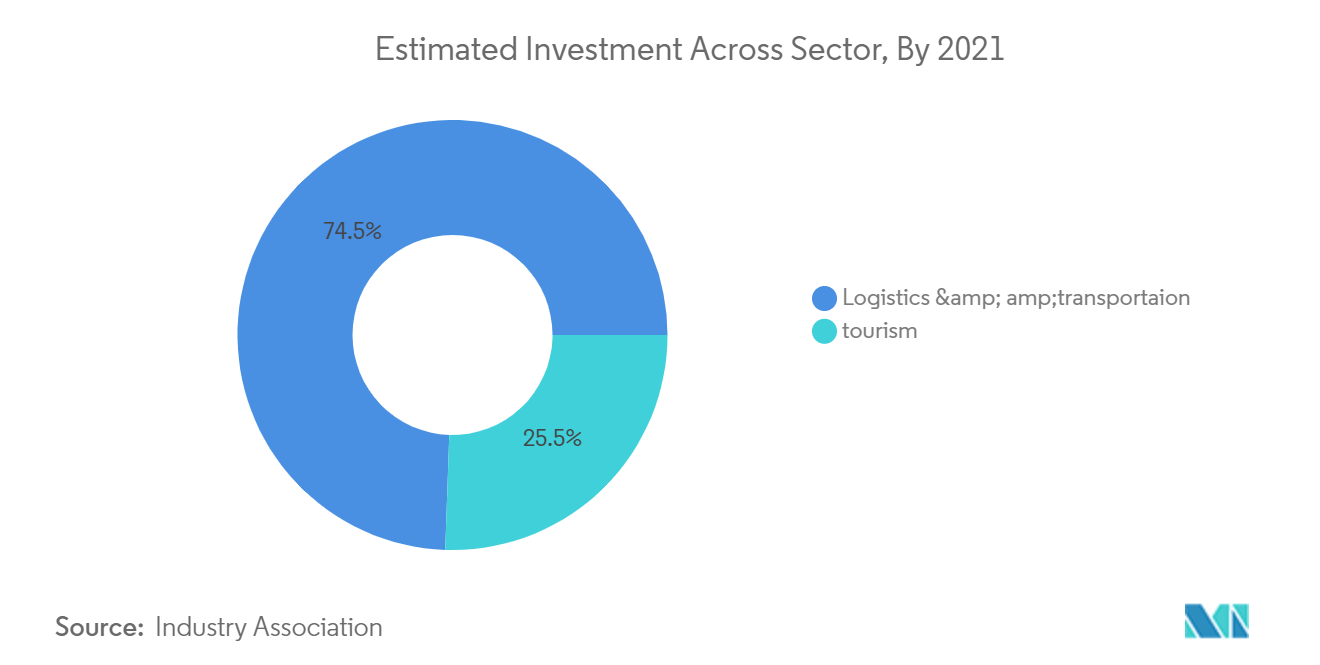Market Trends of Oman Transportation Infrastructure Construction Industry
Growing urban population driving the growth of transportation infrastructure.
Growing transportation infrastructure investment is supported by the rapid growth in the urban population. As per the World Bank, in 2022 the urban population of Oman reached 4.4 million. In 2022, the share of the urban population has reached 87.75%.
As the share of the urban population grows, the growth of transport infrastructure is also required to connect them to the urban areas in Oman. The growing urban population boosting the demand for transportation infrastructure construction. Existing infrastructures in developed countries must be improved to improve resilience, improve the environment, and reduce maintenance costs.
The government of Oman is making more investments in transportation infrastructure to cater transportation needs of the urban population. This is creating lucrative opportunities in the infrastructure segment of the country. Hence growing urban population boosts the revenue growth of the Oman Transportation Infrastructure Market.

Sultanate's Economic Diversification Plan (Vision 2040) to provide new growth to the market
Oman’s economy heavily relies on revenue from oil, a shift is required to diversify sources of income by promoting investments in targeted sectors. The government has focused on pursuing this objective by boosting the contribution of the five target sectors in the Ninth Five Year Plan, including logistics, manufacturing, tourism, fisheries, and mining, as well as moving forward with key strategic projects.
The Sultanate of Oman is executing a successful model of economic diversification, notably, the country’s trade liberalization in goods and services. Oman pursued an active plan of development that focuses on diversification, manufacturing, and privatization to diminish the contribution of the oil sector to the GDP to 9%. The tourism and hydrocarbon industries have become the main components of the government’s economic diversification strategy.
In the manufacturing sector, Tanfeedh (Economic Diversification Plan) was slated for new investments by 2020, although this was brought to a standstill by the pandemic later. The key sub-sectors include the petrochemicals, metals, materials, and the food and energy sectors. Oman’s tourism sector is mostly untapped. The Travel and Tourism Competitiveness Index of Oman in 2019 was 58 globally. Although the pandemic heavily impacted the tourism sector in 2020, an increase in infrastructure spending plans helped the sector recover over 2021‑2022.
Within logistics, the Omani government is positioning Duqm as a major industrial and business zone in the region. One of the objectives of the Special Economic Zone Authority in Duqm is to develop the central arid region of the country and create ample space for international and local investors to build world-class projects. This will help achieve promising growth in the Omani economy, and at the same time, strengthen the country's position at the international level.


